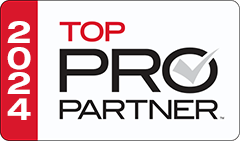
For many homeowners, fall is a bridge season between AC and furnace use. Some days are mild and don’t require your AC or furnace, while others are just chilly enough to justify turning up the heat. However, skipping Important HVAC prep in the fall almost guarantees higher utility bills and increases the risk of a costly emergency breakdown later. A comprehensive fall tune-up saves you money, prevents inconvenient equipment failures, and keeps your family safe and warm when the temperatures drop. The HVAC experts at Aspen Aire Heating & Cooling have put together this easy-to-follow fall HVAC maintenance checklist for Des Moines Homeowners.
Aspen’s DIY Fall HVAC Checklist
These are simple, yet vital tasks every Des Moines homeowner can and should do to maximize heating efficiency and protect their home and wallet. Below is a brief checklist you can cross of your list this fall.
- Replace the air filter
- Test the thermostat & change batteries
- Check vents & registers
- Clean furnace area
- Test carbon monoxide (CO) detectors
- Inspect flue exhaust pipe
- Boot up furnace and Listen for strange sounds
Replace the Air Filter
The single most important DIY maintenance task is replacing your air filter. A summer of heavy air conditioning use leaves filters clogged with dust, dirt, and allergens. A dirty filter dramatically restricts airflow, forcing your furnace to work harder and increasing energy costs and unnecessary wear and tear.
Key Takeaway
A clean filter improves airflow, optimizes system efficiency, and drastically improves your indoor air quality as you seal up your home for winter.
Expert Tip
Be sure you know your filter type. Standard 1-inch filters need replacing every 1–3 months, while thicker 4-inch filters can last up to six months. If you have a permanent filter, follow the manufacturer’s directions for cleaning it thoroughly.
Clear Debris from the Outdoor Unit
Your outdoor air conditioner, is about to go into its own form of winter hibernation. While it’s not in use, make sure it’s clean and protected.
How to Clean and Protect the Unit
Rake away all leaves, sticks, grass clippings, and other yard debris that have built up around the base of the unit. Keeping a clear perimeter of at least two feet keeps the unit properly dry and prevents rodents from nesting in the coils.
Test the Thermostat and Batteries
Before you turn on the furnace make sure the your thermostat is working correctly.
Install fresh batteries in your thermostat. Then, switch the system setting from “Cool” to “Heat” and raise the temperature to make sure the furnace successfully ignites and sends warm air through your vents. It’s much better to discover a thermostat issue now than on a 20-degree morning.
Efficiency Tip
Review your winter programming schedule. Adjust the settings to automatically lower the temperature when you’re away or asleep to achieve maximum energy savings during peak usage months. Additionally, the U.S. Department of Energy states that by following efficiency practices like air sealing and proper maintenance routines, homeowners can reduce energy use from 20% to 50%.
Check Vents and Registers
Take a few minutes to walk through every room in your home and make sure all supply and return registers are completely open and unobstructed by furniture, curtains, or thick rugs. Blocking a register limits heat distribution, making your system run longer to satisfy the thermostat, wasting energy.
Never close more than 10–20% of your home’s vents. Closing too many can cause a pressure imbalance, potentially overheating the furnace’s heat exchanger and leading to premature system failure.
Clear the Furnace Area and Check for Hazards
Remove all flammable materials, like paint cans, cleaning solvents, stacks of newspapers, or moving boxes, from the immediate vicinity of the furnace or boiler. The area around the unit must be kept clean and clear to prevent fire hazards and ensure proper combustion air supply.
Prepping Your Furnace & Heating System
These steps involve closer inspection and safety checks that keep your primary heating unit safe and function for the upcoming winter.
Inspect Carbon Monoxide (CO) Detectors
According to the Center for Disease Control and Prevention (CDC) over 100,000 people visit the emergency room every year for carbon monoxide poisoning. Since furnaces are a potential source of CO, this is a non-negotiable fall safety check. Test every CO detector in your home and replace the batteries immediately. Even hardwired units often have battery backups that need fresh power.
Remember, detectors should be on every level of the home and near all sleeping areas, not just near the furnace itself. If your unit is more than five years old, consider replacing it entirely.
Check the Heat Exchanger and Flue Vents
The heat exchanger is the most critical component of your furnace, as it separates the combustion gases from the breathable air in your home. Visually inspect the flue pipe (the exhaust vent leading out of your house) for blockages or corrosion. Any sign of blockage is a safety issue.
For more information on winter safety tips check out our article “Winter Weather Safety Tips for Your Home.”
Professional Note
A cracked heat exchanger is impossible to spot without specialized tools and training. This is why the heat exchanger inspection requires a certified technician from Aspen Aire. A crack can allow deadly CO gas to leak into your home’s air supply, a danger too serious to ignore.
Listen for Strange Noises
Your furnace should run smoothly and quietly. When you turn the heat on for the first time, listen closely. Scraping could indicate a failing blower wheel; squealing often points to a worn-out fan belt or motor bearing; and loud rumbling might signal ignition or burner issues.
If you hear any unusual sounds, turn the unit off and call Aspen Aire Heating & Cooling immediately. These noises are usually a preview to a total system failure.
Shutting Down Your Cooling System
Properly turning your air conditioner off helps it survive the winter and better prepares it for the following spring and summer. Like before we’ve included a short list you can cross off as you start to turn your AC off for the season.
- Turn off AC power
- Clear debris around outdoor unit
- Gently clean AC coils with water
- Cover only top of the AC
Turn Off Power to the Unit
For safety and protection, always cut power to the outdoor condenser unit before the winter. Locate the outdoor disconnect switch (a small gray box near the unit) and flip the switch to OFF. You should also switch the dedicated circuit breaker in your main electrical panel to the OFF position.
This prevents the unit from accidentally starting during a mild winter day, which can damage the compressor.
Clean and Inspect Coils
Give your condenser coils one last cleaning. Gently rinse the outdoor coils using a standard garden hose to remove dirt, dust, and pollen accumulated over the cooling season. Use gentle water pressure so as to not damage the fins. A clean coil prevents corrosion and makes the unit ready to start next spring.
Should You Cover the Condenser Unit?
This is a common question, and the answer is kind of complicated. While a cover keeps out large debris and ice, a full plastic cover can trap moisture underneath, leading to rust and corrosion, and even encourage small rodents to nest inside.
Our Recommendation
Aspen Aire recommends using a small, hard cover (like a piece of plywood or a rigid plastic cover) over the top of the unit only. This protects the internal components from falling ice and heavy debris while leaving the sides exposed for ventilation.
Don’t Skip the Professional Fall Furnace Tune-Up
While performing these DIY tasks is an excellent start, a professional annual HVAC tune-up by a certified contractor is non-negotiable for system longevity, peak safety, and maintaining your manufacturer’s warranty.
When a technician from Aspen Aire Heating & Cooling visits your Des Moines home, they go far beyond the DIY checklist. They:
- Calibrate the thermostat and check gas pressure.
- Inspect all electrical components.
- Lubricate moving parts
- Perform a detailed inspection of the heat exchanger.
- Test the system’s limits to ensure peak efficiency
Don’t risk an inconvenient and expensive emergency call in the middle of a blizzard. Call Aspen Aire Heating & Cooling today to Schedule Your Fall Furnace Tune-Up. We are proud to serve our neighbors in Des Moines and the surrounding Iowa communities.

